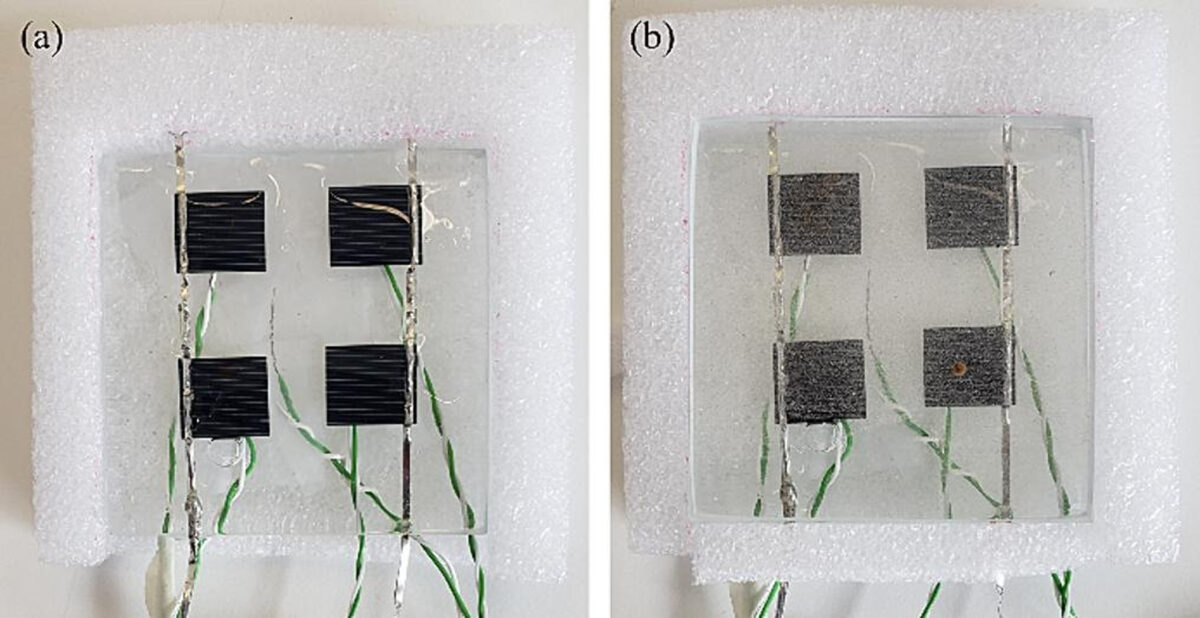A team of scientists from the Imperial College London in the United Kingdom and the Imam Abdulrahman Bin Faisal University in Saudi Arabia have investigated for the first time the effect of intra-cell nonuniform distributions of soiling on PV module surfaces.
“To the best of the authors' knowledge, no such work has been reported in the literature,” the researchers explained. “The novelty of the work is in providing a comprehensive assessment of the effect of nonuniform soiling characteristics on a PV module.”
In the paper “Experimental investigation of nonuniform PV soiling,” published in Solar Energy, the research team explained that it conducted its tests on south-oriented mini monocrystalline PERC solar modules measuring 50 mm × 50 mm × 4 mm and with tilted angles 0 degrees, 23 degrees, 45 degrees, and 90 degrees. The panels had a power output of 92 mW, a maximum voltage of 2.2 V, a maximum current of 42.4 mA,
“The consideration of vertically tilted surface has been incorporated into this study, not only for its immediate implications but also for its prospective relevance to building-integrated photovoltaics (BIPV),” the group specified, adding that each module could be built with up to four solar cells connected in series. It also used a liquid UV-glue adhesive to glue cells on a clean glass sample.
The academics collected soil samples from a residential rooftop in Muscat, Oman, while replacing the front glass each month during 2021. They used a Shimadzu UV-2600 spectrophotometer to measure the optical properties of the soiled module surface and chose clean low-iron glass as a benchmark for the testing.
They then also utilized a Quantal FEG 650 scanning electron microscope (SEM) and an an energy dispersive x-ray spectrometer (EDXS) to analyze the composition of the soiling material. “Prior to SEM/EDXS imaging, a carbon coater was used to improve the accuracy of the surface analysis by enhancing the electron signal required for the imaging process, while also preventing thermal damage,” they added.
For the electrical characterization, the group used an indoor solar simulator that can replicate standard illumination conditions. It also applied thermocouples to the rear side of each solar cell to conduct temperature measurements. “Beyond the average loss in power, we are interested in the power variations over the tested spatial regions, and correlations between the power generation and the degree of soiling,” the researchers further explained.
The tests showed that nonuniform soiling on the mini modules can result in an average temperature increase of 2 C and a 13% average transmittance drop compared to the reference glass.
“The transmittance losses were found to be strongly correlated with power generation, with an average power deterioration of around 6–7% per 5% drop in transmittance,” the scientists stated. “Specifically, a power generation loss of 30%, 31%, 27% and 32% was measured relative to a clean sample across the four spatial regions/zones. Finally, a large solid formation was identified on the horizontal tilt sample, which gave rise to a localised hot spot.”
Looking forward, the researchers said more “regional” researchers are needed to define standardized metrics to assess soiling nonuniformity. “Our results highlight the importance of addressing PV soiling for optimal PV performance, and of accounting for spatial soiling nonuniformity,” they concluded.
This content is protected by copyright and may not be reused. If you want to cooperate with us and would like to reuse some of our content, please contact: editors@pv-magazine.com.




By submitting this form you agree to pv magazine using your data for the purposes of publishing your comment.
Your personal data will only be disclosed or otherwise transmitted to third parties for the purposes of spam filtering or if this is necessary for technical maintenance of the website. Any other transfer to third parties will not take place unless this is justified on the basis of applicable data protection regulations or if pv magazine is legally obliged to do so.
You may revoke this consent at any time with effect for the future, in which case your personal data will be deleted immediately. Otherwise, your data will be deleted if pv magazine has processed your request or the purpose of data storage is fulfilled.
Further information on data privacy can be found in our Data Protection Policy.